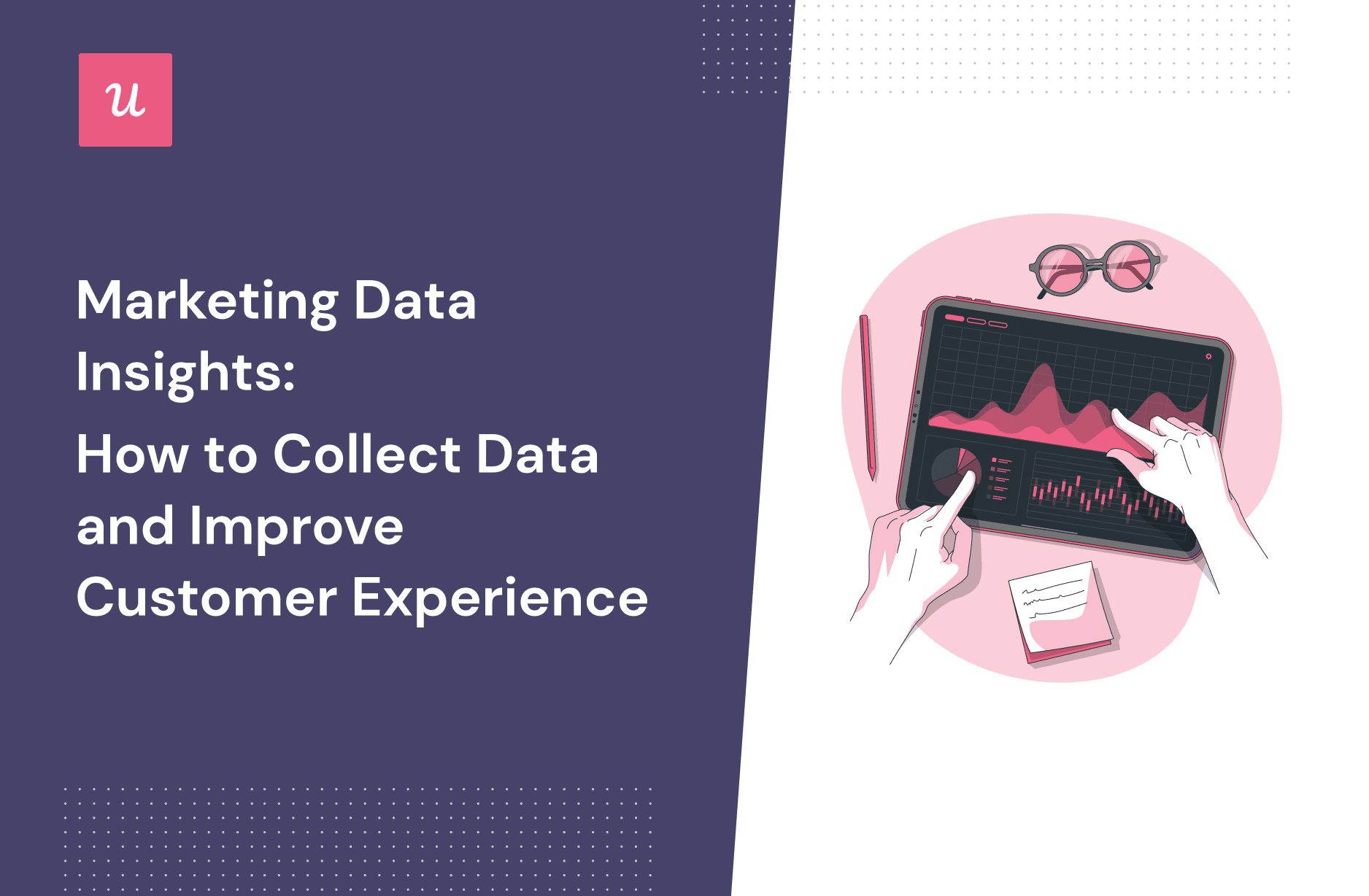
Marketing Data Insights: How To Collect Data and Improve Customer Experience
Why are marketing data insights critical when making strategic business decisions?
With marketing insights, product marketing teams can locate marketing channels that bring the most valuable customers. Product managers can use marketing data to improve customer experience.
In a nutshell, insights help SaaS companies understand the customer journey better and find growth opportunities.
So let’s learn how to collect and act on marketing insights!
Try Userpilot Now
See Why 1,000+ Teams Choose Userpilot

What is marketing data?
Marketing data is any information about customer behavior collected from public and private sources.
This information helps marketing teams derive actionable insights into user behavior and build hyper-personalized marketing messages to deliver memorable customer experiences.
What are marketing data insights?
Marketing data insights refer to analyzing marketing data and using retrieved patterns to improve marketing performance so that companies can generate more profits. Marketing insights will get you to understand what drives customer actions, where the marketing budget leaks away, and so on.
Why is collecting marketing data insights so important?
Here let’s go into detail and discuss how marketers can benefit from collecting the right data.
Evaluate your marketing strategy
Understand whether your marketing strategies work. With marketing analytics, you’ll find leaking buckets that drain your marketing budget (aka campaigns that don’t bring prospects or attract the wrong audience).
Likewise, you will locate marketing campaigns that bring the most value. Hence, you can pour more money into scaling these channels or get buy-in from stakeholders for experimenting with different traffic sources.
Ensure you’re getting the expected ROI and business growth. Marketing analytics show whether or not you’re meeting the expected numbers. If not, dig deeper into the data to unlock growth opportunities.
In the end, data analysis helps product marketers refine their marketing strategy and optimize the return on investment.
Get actionable insights on ideal customers
Marketing analytics will help you identify common behaviors of your target audience so that you can segment users based on their contribution to revenue growth. Understanding your power segments will help you target new users with similar behavior.
On top of it, you will learn what marketing messages and activities fuel conversion rates and ensure long-term adoption.
Understand customer journey better
See how customers are progressing down the journey. With funnel exploration, you can break down every step different user cohorts take throughout your site.
Find what’s stopping them from moving forward so you can optimize the journey. For example, you can use a product analytics tool to spot drop-off points.
With real-time analytics, you will have a better understanding of what your customer journey looks like. Additionally, you will notice and fix the friction points to optimize the journey.
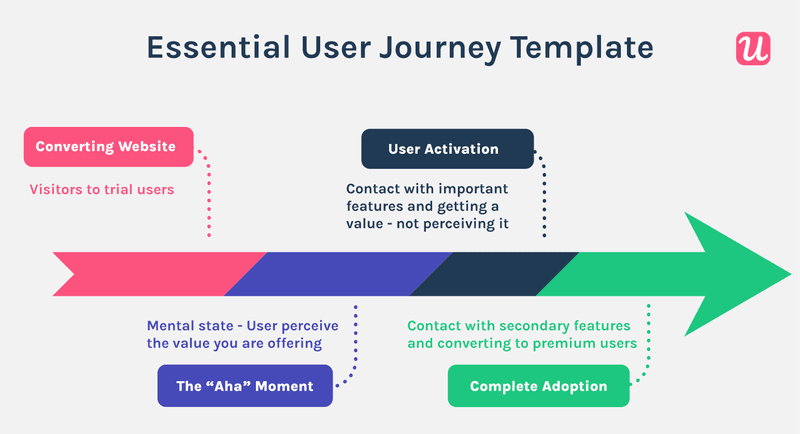
Make data-driven marketing decisions
When you have marketing and customer data in place, you can see what’s working and what’s not and fix the problems:
- Optimize marketing spending. Find campaigns with anomaly ad spending and turn them off.
- Run experiments, analyze results, and scale what’s working.
- Inform your product roadmap by identifying the pain points that impair conversion rates. For instance, you can spot that a microsurvey in the welcome flow or a sign-up form works inadequately on some devices when analyzing the marketing funnel. Report the bug with a high priority.
- Strategize your marketing activities based on user segments that contribute to extended LTV.
In a nutshell, marketing analytics factors into business decisions at different levels.
What are common types of marketing data?
Marketing data comes from multiple sources. Here we’ve outlined the 6 most common sources of marketing data and what they are for:
- Market research insights
- Competitors’ data insights
- Sales data insights
- Customer interactions
- Customer preferences
- Customer feedback
Let’s get more granular from here.
Market research insights
Most often, market research entails surveying the target audience and conducting discovery calls to identify pain points within the industry.
Product teams and marketers use the data to guide product development, pricing strategy, creating personalized customer experiences, and informing marketing strategy.
The end goal is to adjust marketing strategy and product development to meet market needs and consequently ensure customer acquisition and retention to increase customer lifetime value.
Competitors’ data insights
Competitors’ insights are about analyzing competitors’ marketing strategy and consumer behavior with competitors’ services. You can do so by reading customer feedback on review services like G2 or Capterra, examining social media activity, and analyzing digital PR strategies.
Look for positive and negative reviews, what problems consumers bring up on social media, and what content they engage with most. Then, use this knowledge to inform your strategy and product roadmap to outperform the competition and get the biggest market share.
Sales data insights
Sales and marketing should be aligned and work as a single system. Sales analytics provide marketers with the most important metrics on the sales funnel based on which marketers can evaluate marketing campaign performance. Examples include the number of marketing and sales qualified leads (MQLs and SQLs), the average sales cycle and revenue throughout different customer segments, etc.
This data helps determine the quality of marketing efforts and refine customer acquisition strategies.
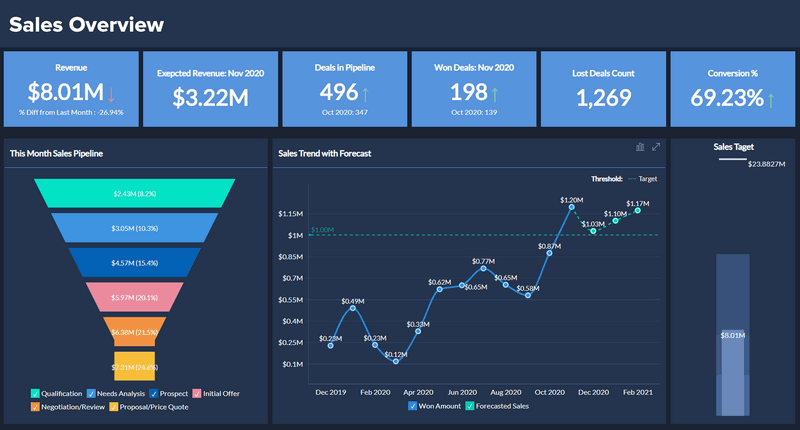
Customer interactions
Customer interaction refers to any communication between a business and its customers:
- Support chat
- Sales calls
- Social media
- Onboarding calls, etc.
A product company can benefit greatly from these channels since customers behave naturally during such interactions and tend to tell the truth about their opinions. Marketers then will use the data to establish a value proposition, while product managers will act on customer insights to address friction.
Customer preferences
Knowing customer expectations and goals at the beginning of the customer journey and over time, helps marketers deliver the right message to the right audience at the right time.
If customers voice their needs and jobs to be done, you can use this knowledge in ad texts. When you see what users are unhappy with your product, you can run an explanatory campaign showcasing the strengths of disliked features.
Customer feedback
Customer feedback is invaluable for locating users’ pain points and understanding what solution they’re looking for. You can then use this information to tailor marketing campaigns and improve customer acquisition alongside user experience.
When reading feedback, answer these questions:
- How do they feel about your product?
- Are they happy, or do they have complaints?
- What suggestions do they have?
- What needs to be improved?
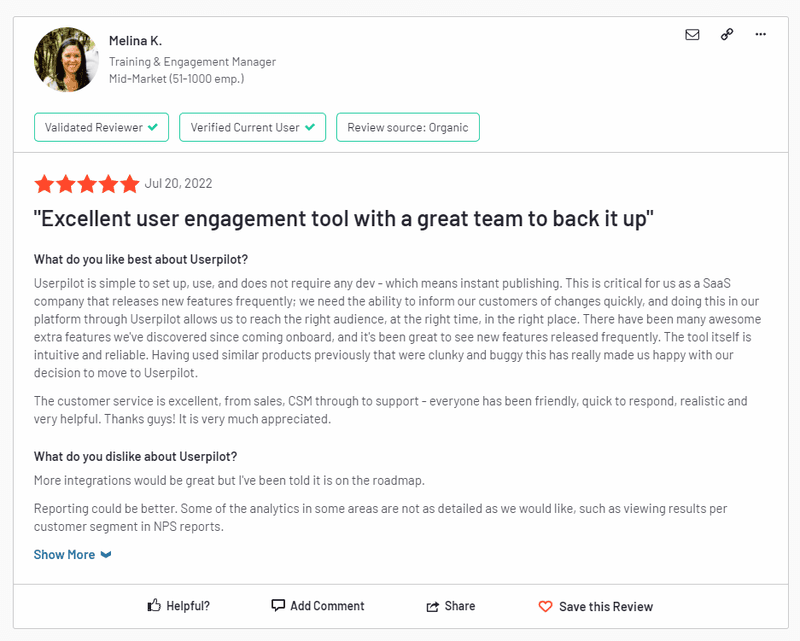
How to collect marketing data and improve user experience?
Marketing data can fuel both customer acquisition and retention. It also affects onboarding and the overall user experience. Here you will learn the advanced methods of collecting data and how to act on it.
Use microsurveys in the welcome flow and understand where customers come from
First, let’s familiarize ourselves with the terminology to ensure we’re on the same page.
Microsurveys are pop-ups that appear due to pre-defined triggers in the app (e.g., NPS surveys, CSAT surveys). A welcome flow is interactive navigation across the product — the beginning of the onboarding flow. A welcome flow is used to greet new customers and capture their information to personalize onboarding and drive product adoption.
A short microsurvey in the welcome flow may collect customer data like:
- Industry
- Roles
- Years of experience
- Company size
- The purpose of using the product
- How did they hear about your brand, etc?
This data can help you understand if your marketing efforts are attracting your target audience. Utilize the data to create personalized onboarding flows to accelerate user activation.
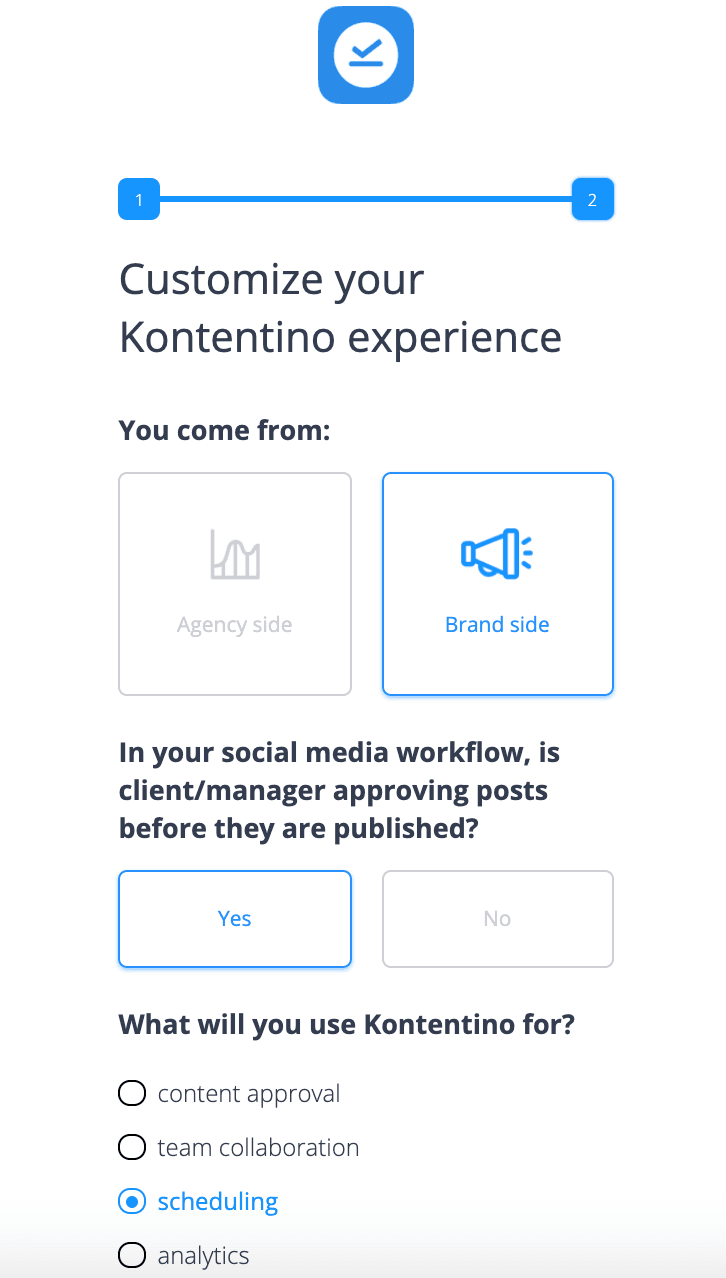
Track customer interactions and segment them based on shared characteristics
Know what features your customers engage with the most and what gets abandoned. You can act on insights in two ways. First, you may want to create the secondary onboarding and familiarize users with the cast-off features. This way, you will increase product usage and drive feature adoption.
Second, you can use this information for content marketing teams and get them to shed light on those features. Write comprehensive guides, craft case studies, etc.
Userpilot’s feature tagging will allow you to track customer interactions in real-time. Tag any UI pattern of your website that will trigger when users click on it or interact with those features.
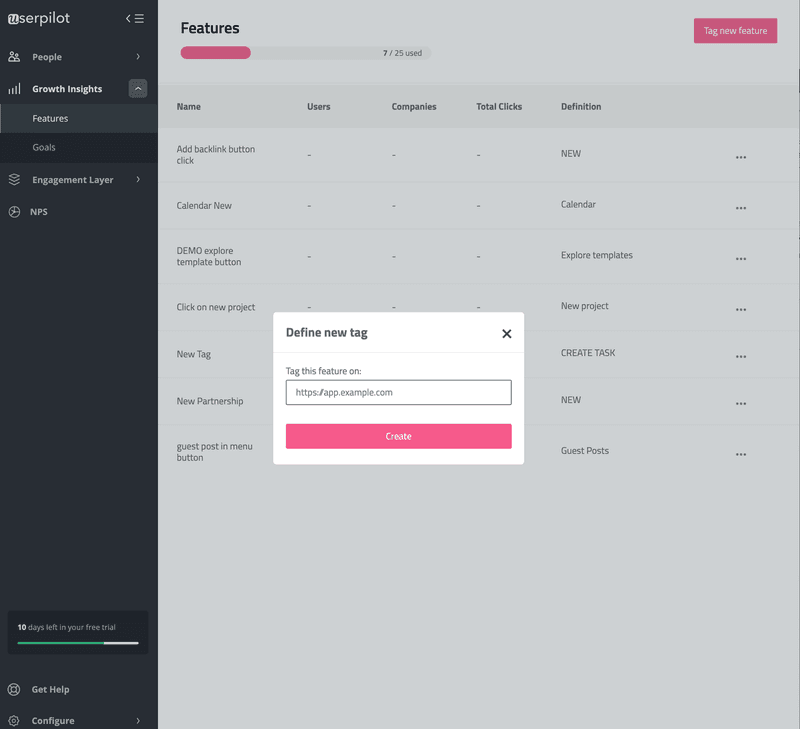
As a result, you’ll have a better understanding of what features customers are using the most or less. Then segment customers by their shared behavior to organize the collected data and act on it later. With Userpilot’s powerful segmentation you can group customers based on their NPS score, reached milestones, content engagement, activity, and much more.
By determining inactive segments, you can reach out to them and offer help before they churn.
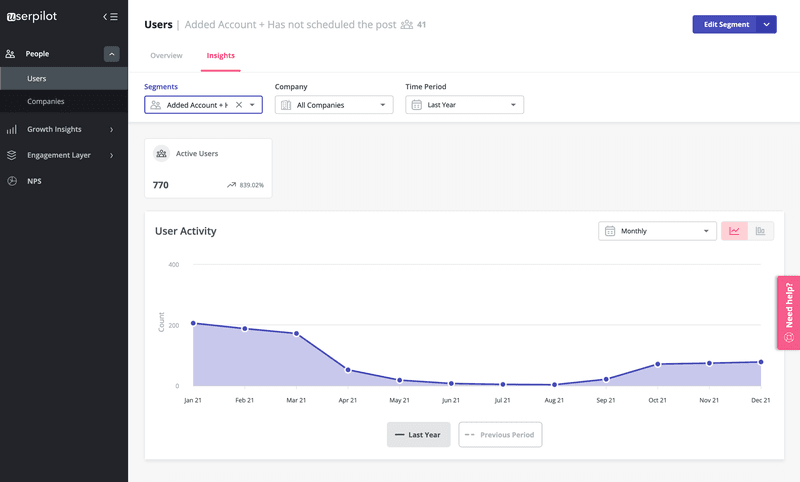
Use session recordings to understand user behavior and find friction points
Hotjar provides two indispensable tools for understanding user behavior and identifying friction points in customers’ journeys — session recordings and heatmaps.
Session recordings capture mouse movements, clicks, taps, and scrolling across multiple pages on multiple devices and save this in a video format. So you can replay user sessions and see how they engage with your product (see a short screen record below).
This helps to understand user behavior, spot product friction, and drop-off points, and refine the user journey.
Heatmaps are excellent ways to spy on real actions taken by visitors as they browse a website or app. With heatmaps, you’ll see what areas of the website draw the most/the least attention. Do these areas correspond to what was pre-defined? If not, change marketing messaging, website layout, or button placement and analyze results.
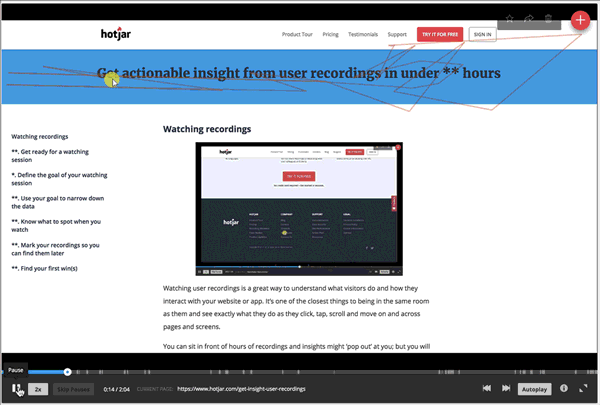
Run NPS surveys to collect feedback and act on
Lastly, obtain customer data through NPS surveys. Measure customer loyalty, collect feedback, and understand the reason behind the score.
With Userpilot, you can contextually pop up NPS surveys using pre-defined triggers. For example, when users engage with the X feature.
Act on the collected insights and make the necessary product improvements.
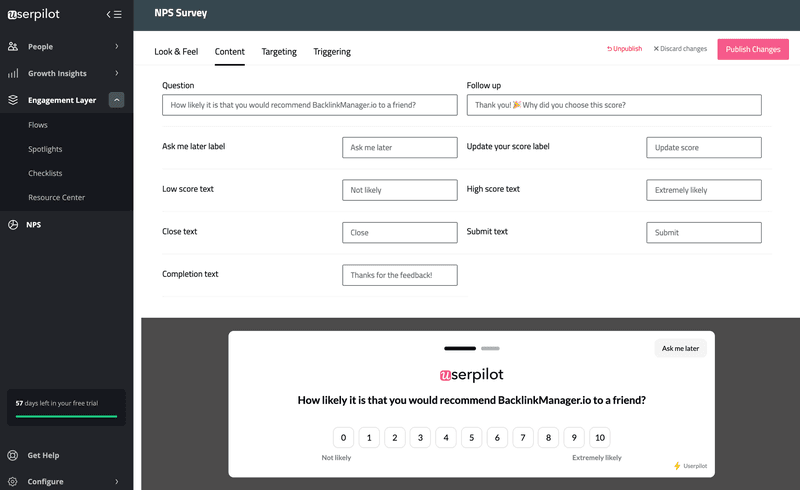
You can also add a qualitative follow-up question to learn the reason behind the score.
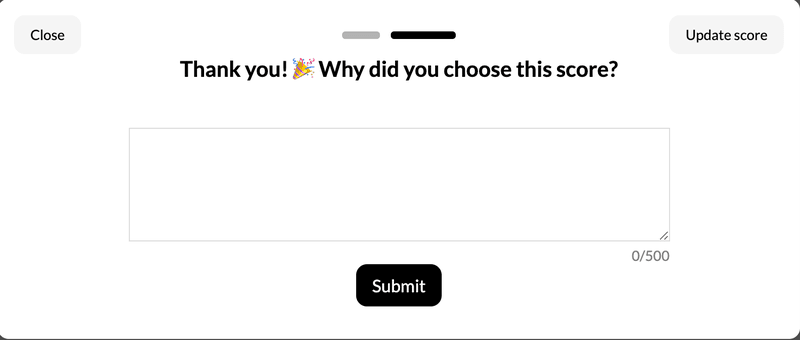
Conclusion
Marketing and customer data are closely connected. Both help you identify friction points so you can create successful strategies to scale.
Utilize marketing data to enhance customer experience and boost your SaaS product growth.
Want to collect invaluable insights into your customer behavior and deliver exceptional customer experiences? Book a demo with Userpilot to collect customer data code-free.






